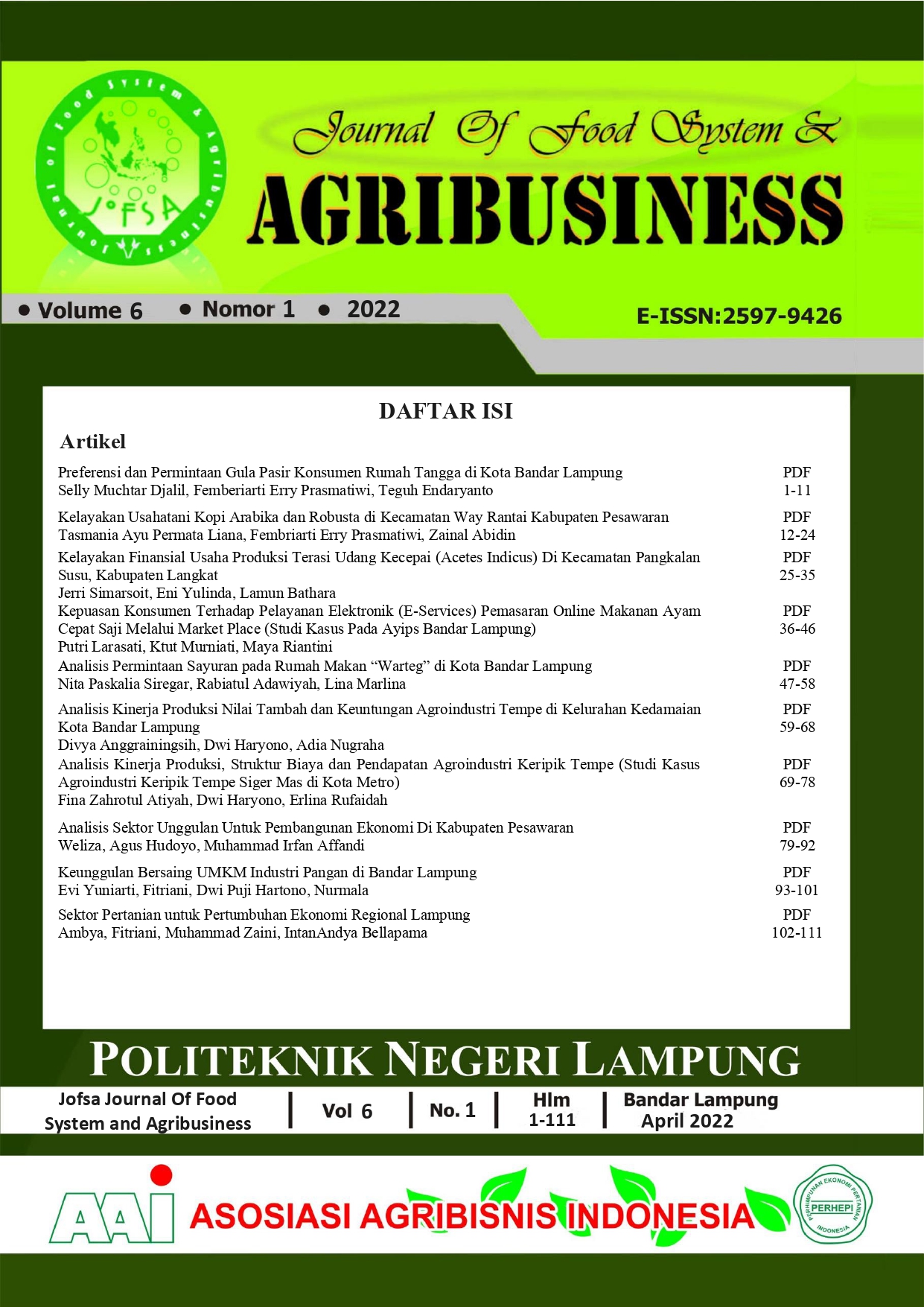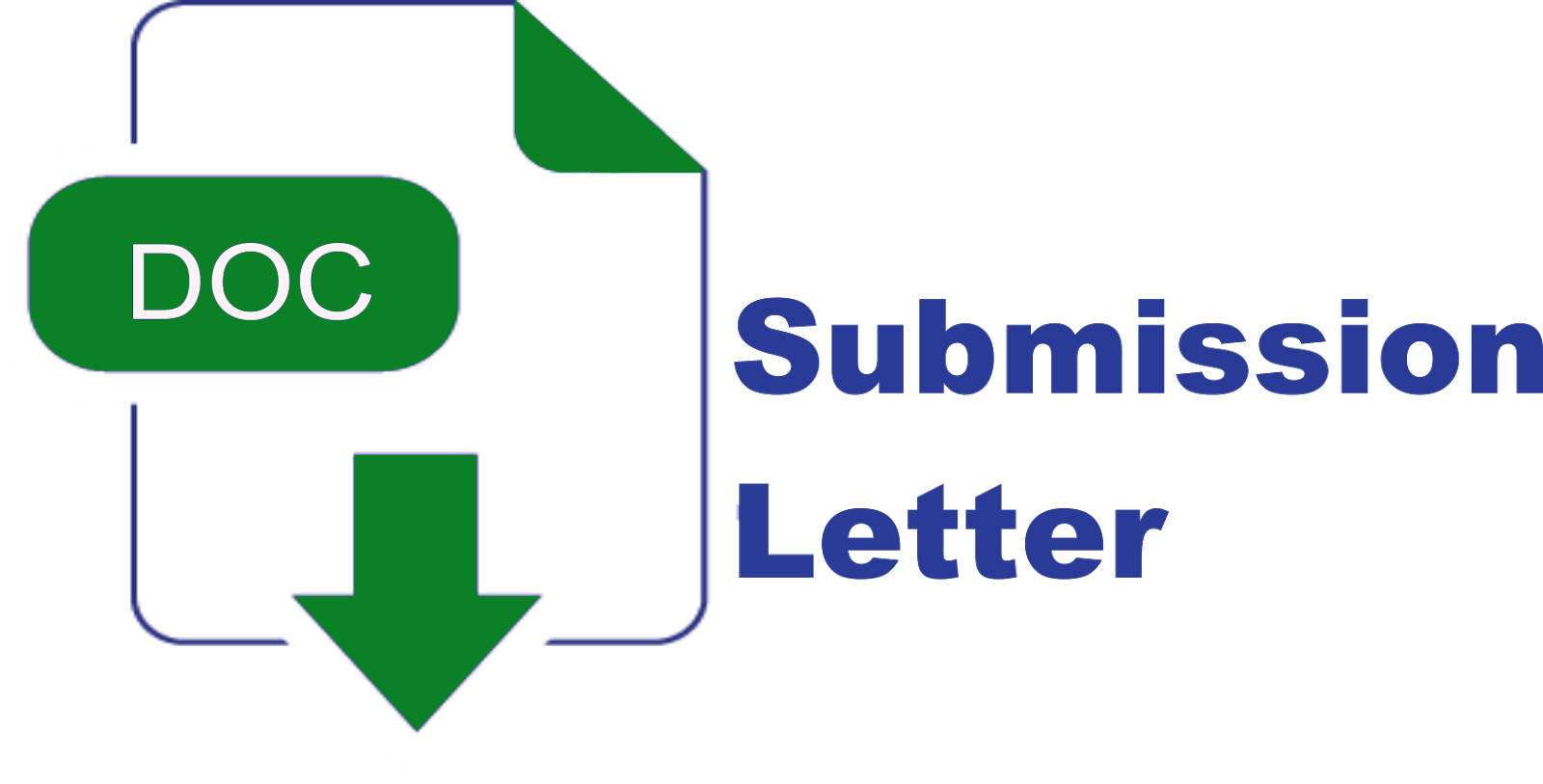Sektor Pertanian untuk Pertumbuhan Ekonomi Regional Lampung
DOI:
https://doi.org/10.25181/jofsa.v6i1.2580Keywords:
Input, Output, agriculture, added value, Input-OutputAbstract
Agricultural sector is a major contributor in the economic structure of Lampung. More than 44,75% people work in agricultural sector. However, the productivity of the agricultural sector was lower than other economic sectors. This study was conducted to analyze the development of agricultural sector based on the condition of the output, added value, and supply contribution basis. Method of cross-tabulation analysis was conducted on Input Output Table Lampung in 2010. The results of the analysis showed that the agricultural sector in Lampung province was still dominant in the economic structure of the region. But attention to the downward trend that occurred in each sub-sector needs to be paid because stagnation and slowing growth rate will be higher. Output contributions of agricultural sector were dominated by food crops, fisheries, plantation, and livestock. Meanwhile, the greatest added value contributor were primary agricultural sector and the food industry in the downstream (agroindustry). However, no sectors that have the largest distribution in Lampung are directly related to agriculture.Downloads
References
Ambya, A. (2020). Transformasi Alokasi Dana Desa terhadap Ketimpangan Pendapatan dan Wilayah Perdesaan di Indonesia. Jurnal Ekonomi Pembangunan, 9(1), 16–23. https://doi.org/10.23960/jep.v9i1.84
BPS Lampung. (2010). Tabel Input Output Propinsi Lampung 2010. Bandar Lampung.
BPS Lampung. (2021). Provinsi Lampung Dalam Angka 2021. In BPS Provinsi Lampung (Vol. 2).
Fitriani, F., Sutarni, S., Haryono, D., & Ismono, R. H. (2014). Kinerja sub-Sektor Tanaman Pangan pada Sektor Pertanian Lampung. Kedaulatan Pangan Dan Pertanian, 233–241. Yogyakarta: Jurusan Sosial Ekonomi Pertanian Faperta UGM.
Fitriani, Sutarni, Haryono, D., Ismono, H., & Lestari, D. A. H. (2017). Pertanian Perdesaan Lampung: Peluang dan Tantangan. JoFSA (Journal of Food System & Agribusiness), 1(2), 43–52.
Fitriani, Sutarni, Yuniarti, E., Ismono, H., Lestari, D. A. H., & Haryono, D. (2022). Lampung Macroeconomy: A Model of Social Accounting Matrix. Jurnal Ekonomi Pembangunan: Kajian Masalah Ekonomi Dan Pembangunan, 2(2), 263–273.
Indonesia, B. (2015). Statistik Indonesia. Retrieved from http://library1.nida.ac.th/termpaper6/sd/2554/19755.pdf
Kartono, D. T., & Nurcholis, H. (2016). Konsep dan Teori Pembangunan. Pembangunan Masyarakat Desa Dan Kota, IPEM4542/M, 23–24.
National Statistics Board. (2020). Indeks Pembangunan Manusia 2020. Jakarta: BPS In.
Simatupang, P. (2015). PERSPEKTIF SISTEM PERTANIAN. 2045, 61–79.
Downloads
Published
How to Cite
Issue
Section
License
Copyright (c) 2022 Journal of Food System and Agribusiness

This work is licensed under a Creative Commons Attribution-NonCommercial 4.0 International License.
With the receipt of the article by the Journal of Food System and Agribusiness Editorial Board and the decision to be published, then the copyright regarding the article will be diverted to the Journal of Food System and Agribusiness.
Politeknik Negeri Lampung as the publisher of the Journal of Food System and Agribusiness holds the copyright regarding all the published articles in this journal.
Politeknik Negeri Lampung has the right to multiply and distribute the article and every author is not allowed to publish the same article that was published in this journal.
The manuscript authenticity and copyright statement submission can be downloaded ON THIS FORM. Fill out the form and submit as a supplementary file.
All publications by Journal of Food System and Agribusiness is licensed under a Creative Commons Attribution Non-Commercial 4.0 International License.
























